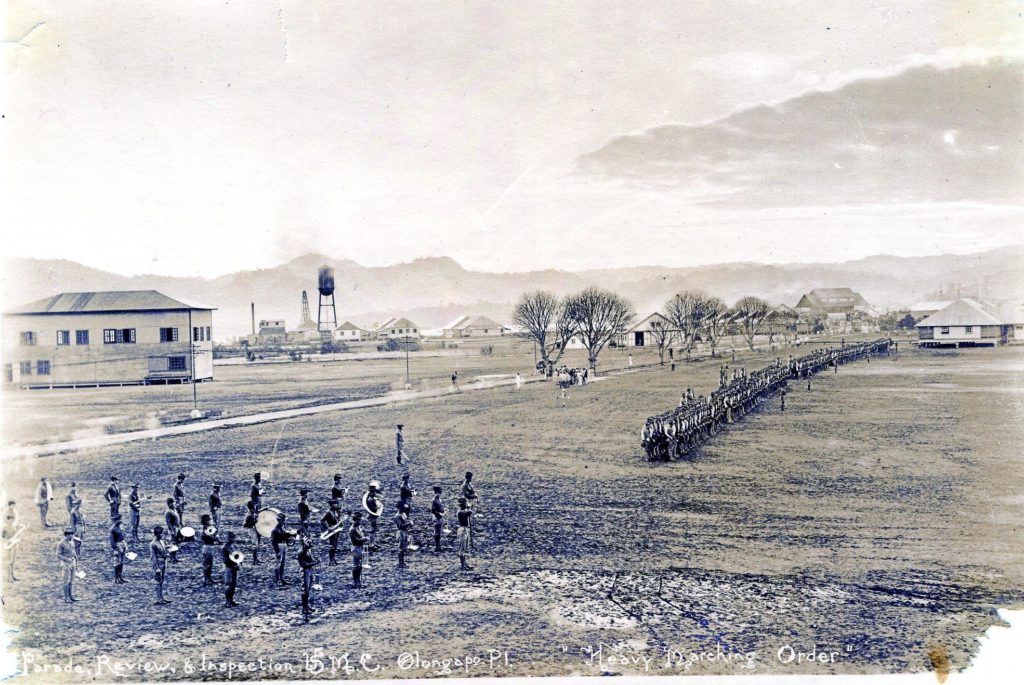
Ze823. Parade and inspection in Subic Bay, circa 1909, what else is new in the Corps? This inspection is called Heavy Marching Order. Several things I consider unique in this picture. The road should be the present George Dewey Ave. and leads right to the Spanish Gate which is hard to make out. Behind the Spanish Gate, in the Navy Yard, stands the uniquely roofed and 2 stories Naval Station Administration Building (shown clearly in other albums here). The low building at right is part what I call the Clover Leave HQ Building (the name is my speculation). Left is one of 2 buildings; I call the 2 Utility Buildings. This picture is from the Earl Hancock “Pete” Ellis Picture Collection in the U.S.M.C. Archives.
—————————————————
This album/presentation is about the daily life and activities of the U.S. Marines on the Olongapo Naval Station.
Early last century, during the Spanish-American War which extended into the Philippine-American War the U.S.M.C had 2 regiments in the Philippines. At one time it was even a Brigade Command. They were spread out to Cavite, Olongapo and fought in Samar, China etc. At that time the Philippine -American War was called The Philippine Insurrection
These pictures came from the Earl Hancock “Pete” Ellis Picture Collection in the U.S.M.C. Archives, they are almost all from the 1908 to 1910 period; this is the URL, click here or copy and paste it:
www.flickr.com/photos/usmcarchives/albums/72157710446176952
——————————————————
This is a short history of the Marines in Subic Bay, click here or copy and paste the URL:
www.subicbaypi.com/subic_history_marine.htm
——————————————————–
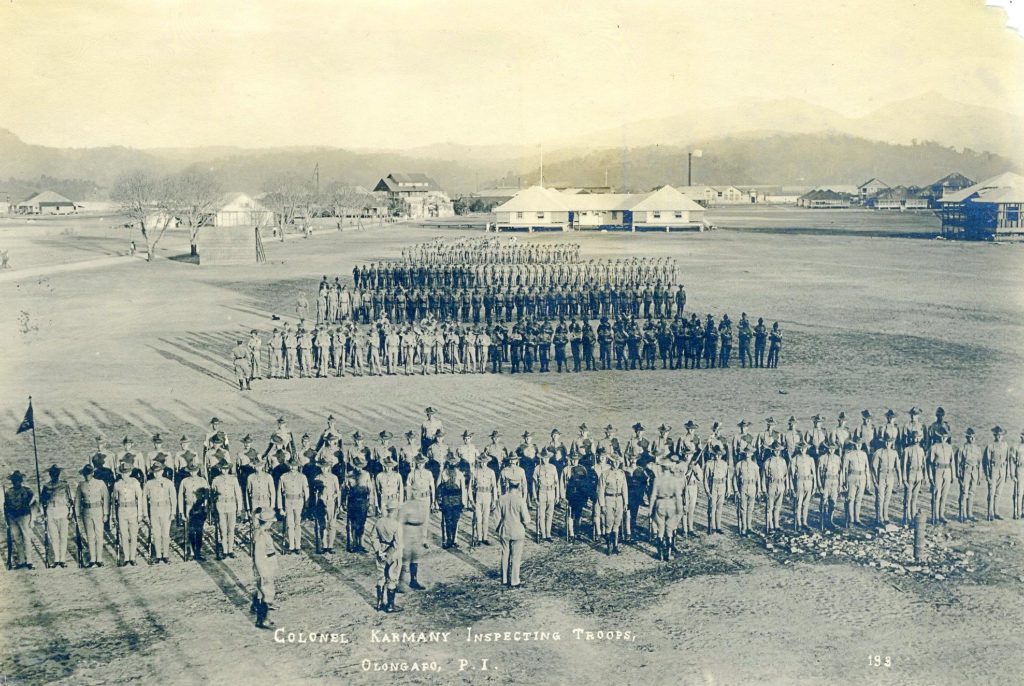
Ze824. Parade and inspection in Subic Bay, circa 1909, what else is new in the Corps? This inspection is by Colonel Karmany. Several things I consider unique in this picture. The road should be the present George Dewey Ave. and leads right to the Spanish Gate which stands out clearly. Behind the Spanish Gate, in the Navy Yard, stands the uniquely roofed and 2 story Naval Station Administration Building (shown clearly in other albums). The low white building, behind the troops, is what I call the Clover Leave HQ Building (the name is my speculation). I can make out a high flagpole with flag behind the white HQ building. I notice the wooden Climbing Wall, used for exercises next to the George Dewey Ave. We can see the South Gate and wall to the Navy Yard. At right is a cluster of bungalows, which I assume are officer quarters. Left of the cluster and above the Yard wall, across the Olongapo Harbor I see the Coaling Station. This picture is from the Earl Hancock “Pete” Ellis Picture Collection in the U.S.M.C. Archives.
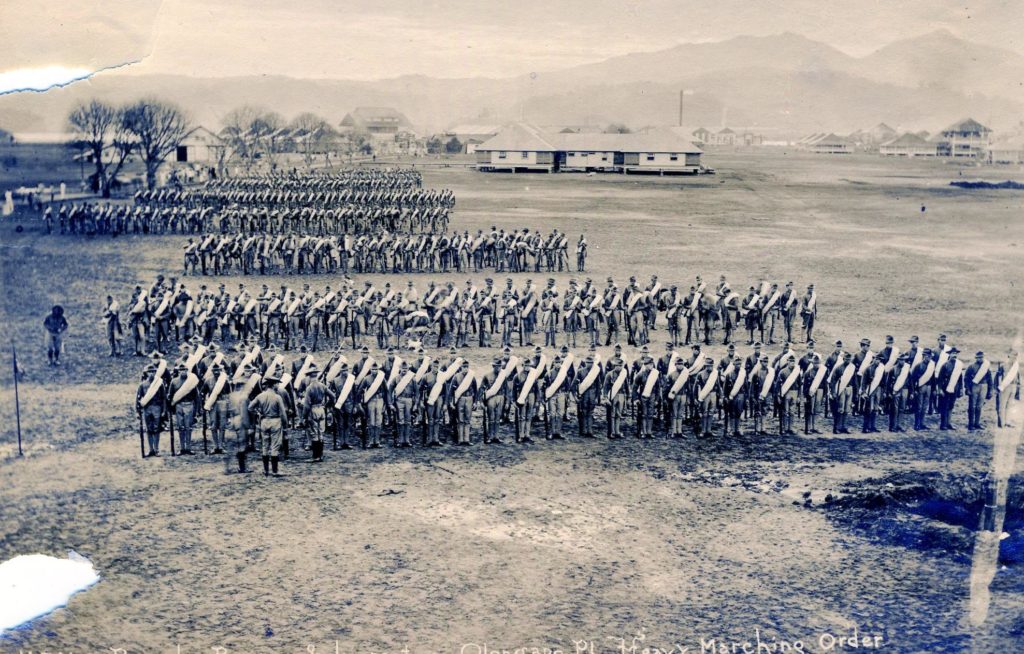
Ze825. This picture and information is about the same as in the last picture # Ze824. This picture is from the Earl Hancock “Pete” Ellis Picture Collection in the U.S.M.C. Archives.
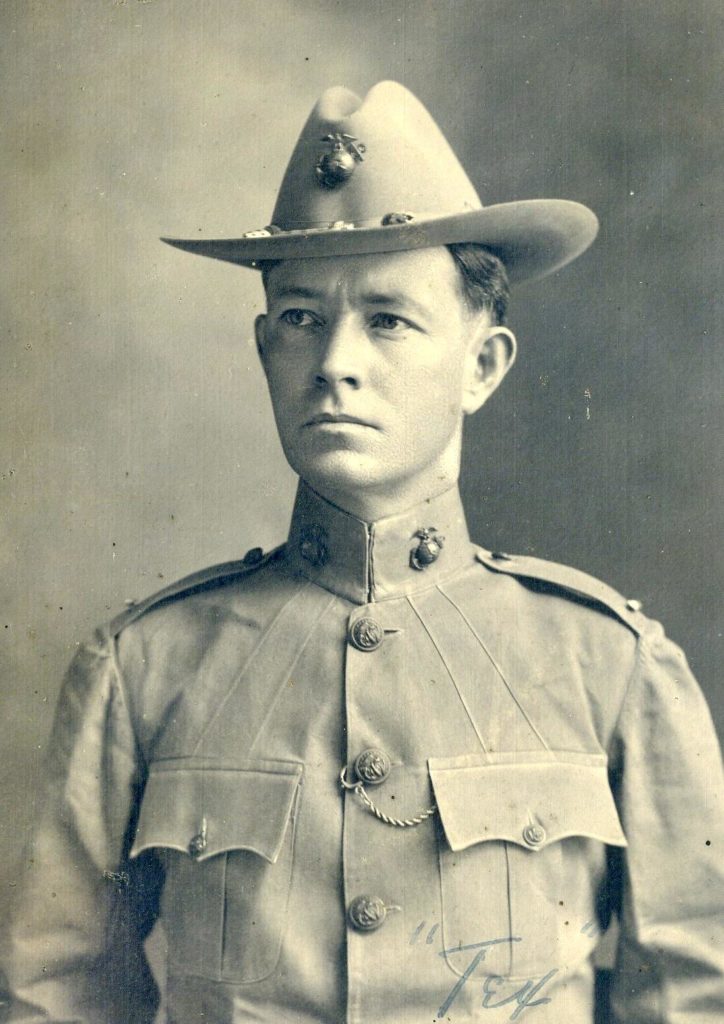
Ze826. A Marine Officer called Tex, he is a fine-looking gentleman, circa 1908. He might be Tex Roger and he looks like he could move up in the Corps; but it appears he died in the Philippines. This picture is from the Earl Hancock “Pete” Ellis Picture Collection in the U.S.M.C. Archives.
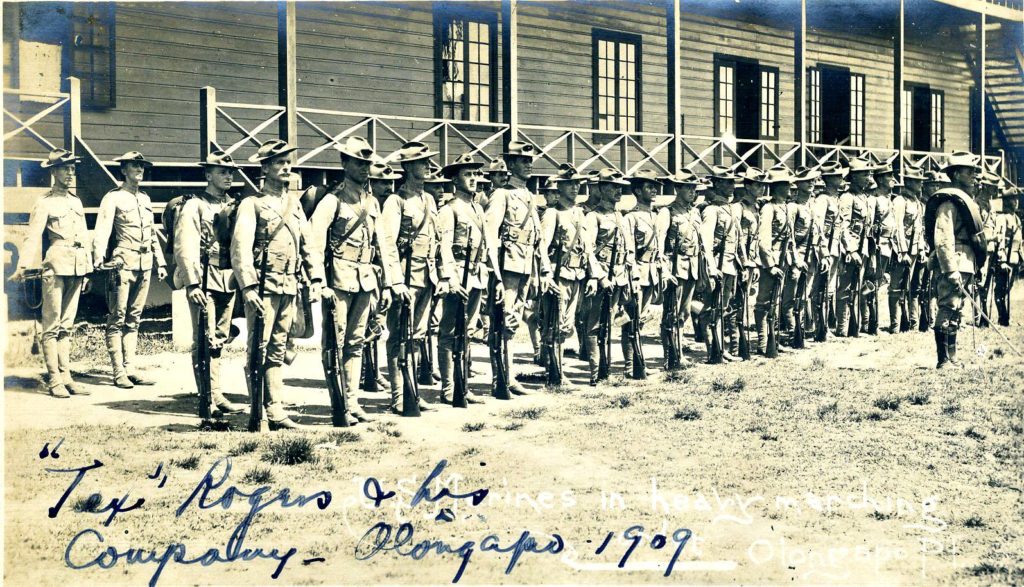
Ze827. Tex Roger and his company in Olongapo circa 1908. This picture is from the Earl Hancock “Pete” Ellis Picture Collection in the U.S.M.C. Archives.
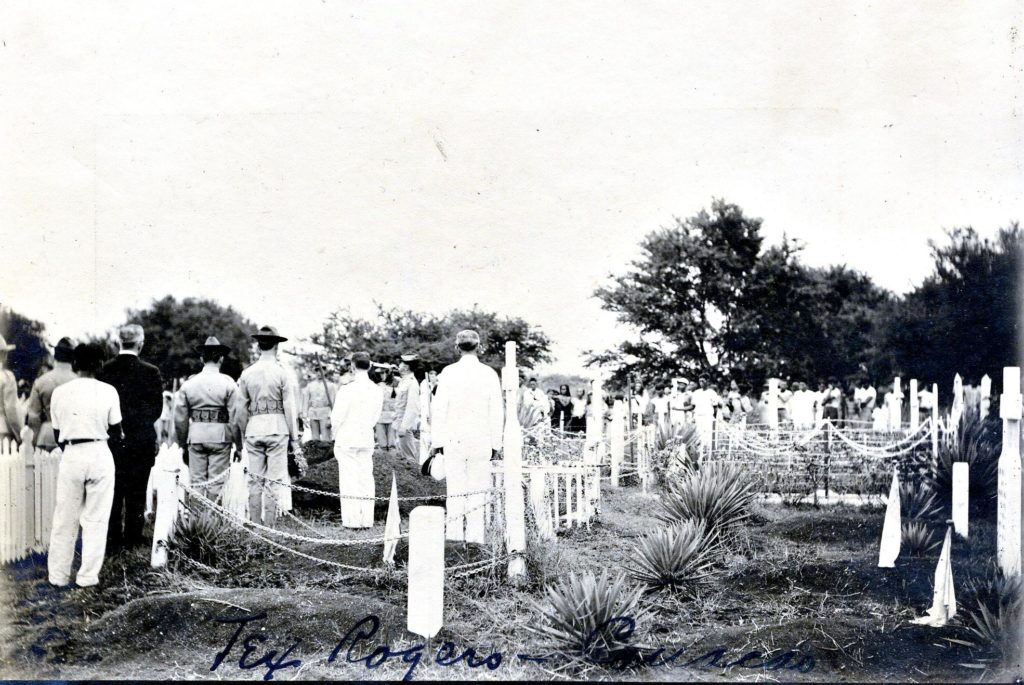
Ze828. One of 3 images of a funeral in Olongapo, circa 1908; it appears to be for a Tex Roger. In this picture a bugle is being used. This picture is from the Earl Hancock “Pete” Ellis Picture Collection in the U.S.M.C. Archives.
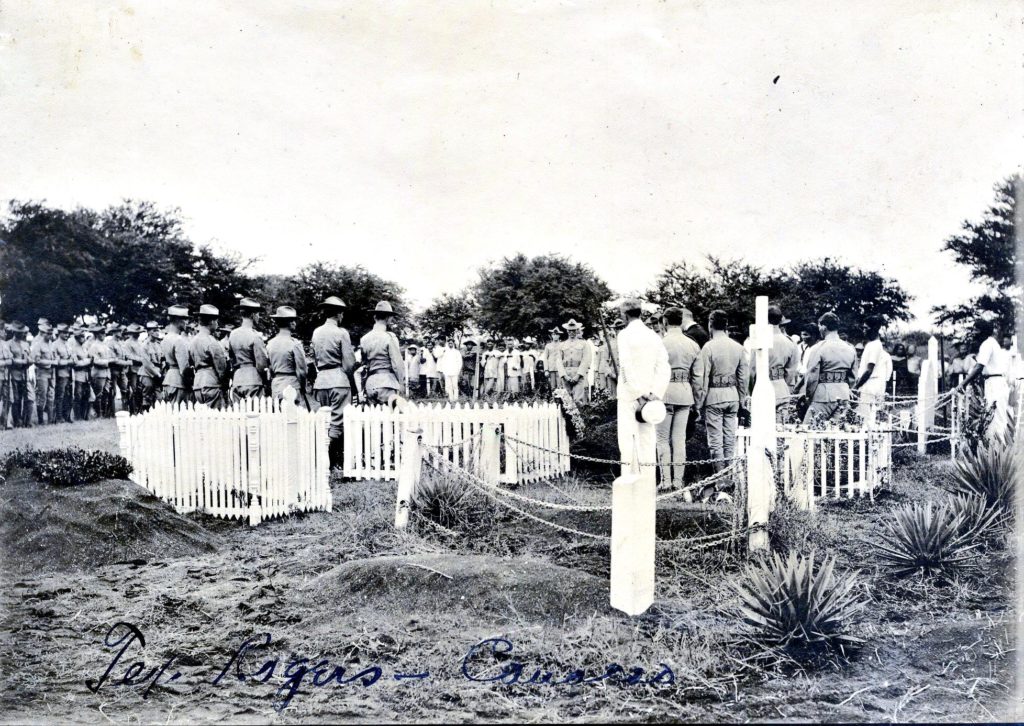
Ze829. One of 3 images of a funeral in Olongapo, circa 1908; it appears to be for a Tex Roger. In this picture, I believe, we are observing a moment of prayer. This picture is from the Earl Hancock “Pete” Ellis Picture Collection in the U.S.M.C. Archives.
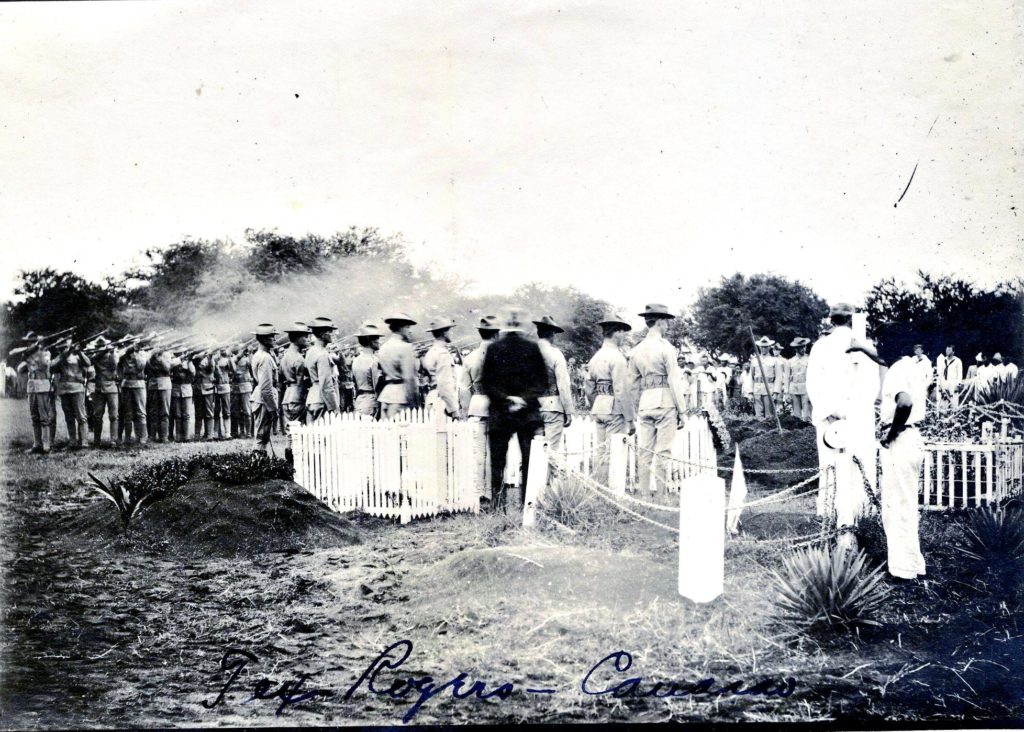
Ze830. One of 3 images of a funeral in Olongapo, circa 1908; it appears to be for a Tex Roger. In this picture, it is the moment of the salute volleys. This picture is from the Earl Hancock “Pete” Ellis Picture Collection in the U.S.M.C. Archives.
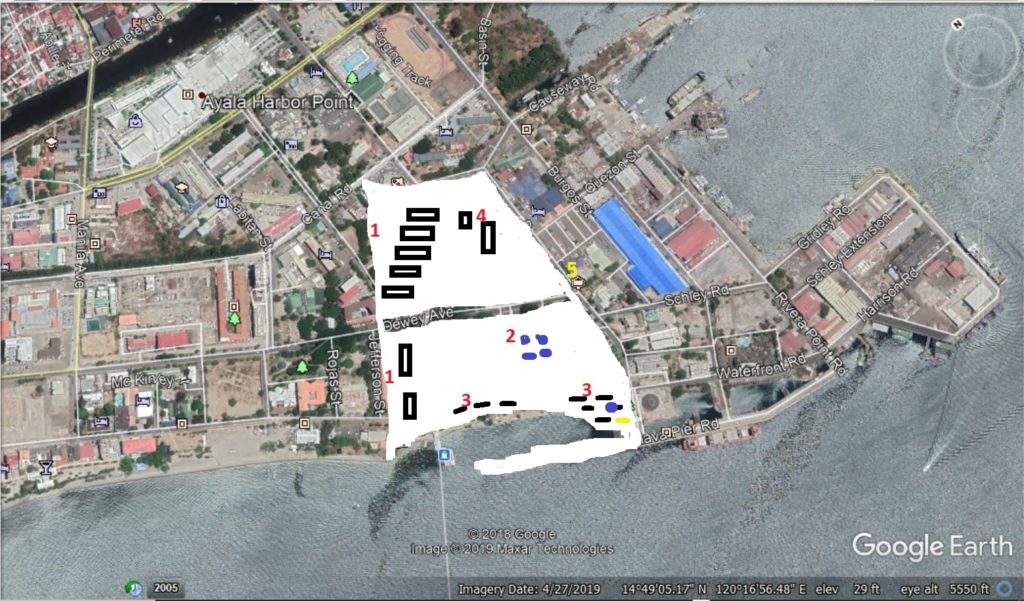
Ze831. This is a Google Earth image of the former Naval Station, early 1900s; I whited out the area, I believe, where the pictures show where the Marines had their barracks and parade ground. 1= are the Barracks; 2= is the clover leave HQ building; 3= officer bungalows; 4= two utilities buildings; 5= the Spanish Gate. This picture is from the Earl Hancock “Pete” Ellis Picture Collection in the U.S.M.C. Archives.
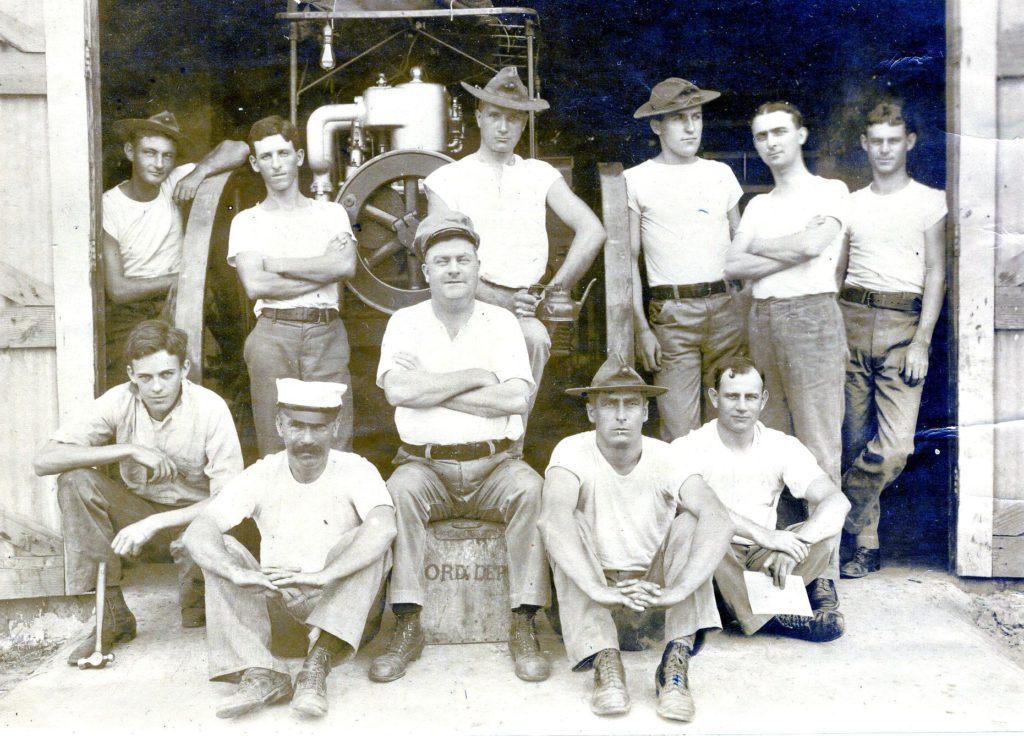
Ze832. Unidentified Marines in and unidentified place in the Philippines, circa 1909. Perhaps a fire station, that machinery got big wheels. This picture is from the Earl Hancock “Pete” Ellis Picture Collection in the U.S.M.C. Archives.
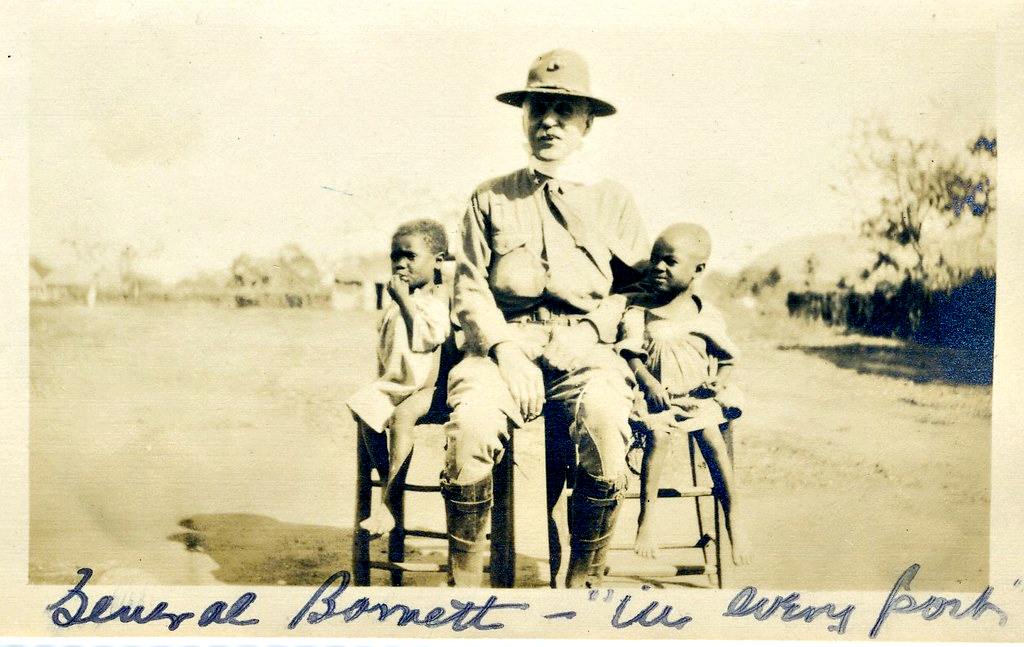
Ze833. USMC Gen. George Barnett in Olongapo, circa 1909. From Wikipedia: George Barnett (December 9, 1859 – April 27, 1930) was the 12th Commandant of the United States Marine Corps. He was a pioneer of amphibious warfare and the U.S. Marine Commandant during American involvement in World War I. This picture is from the Earl Hancock “Pete” Ellis Picture Collection in the U.S.M.C. Archives.
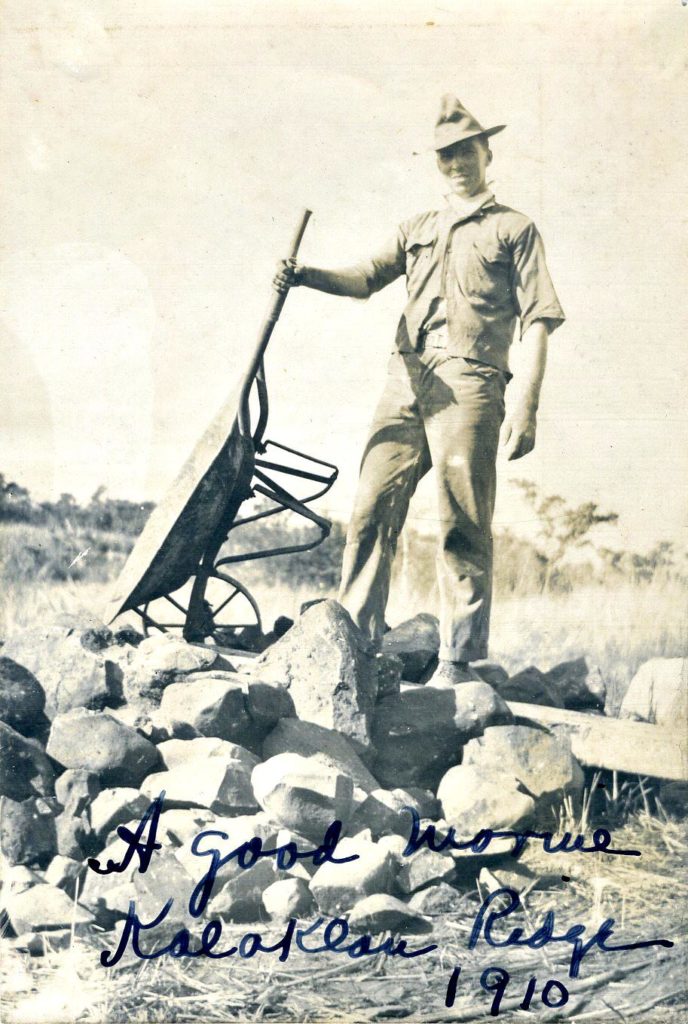
Ze834. A Marine on a working party, installing two 6 Inch artillery pieces on Kalaklan Ridge in Olongapo, circa 1910. This picture is from the Earl Hancock “Pete” Ellis Picture Collection in the U.S.M.C. Archives.
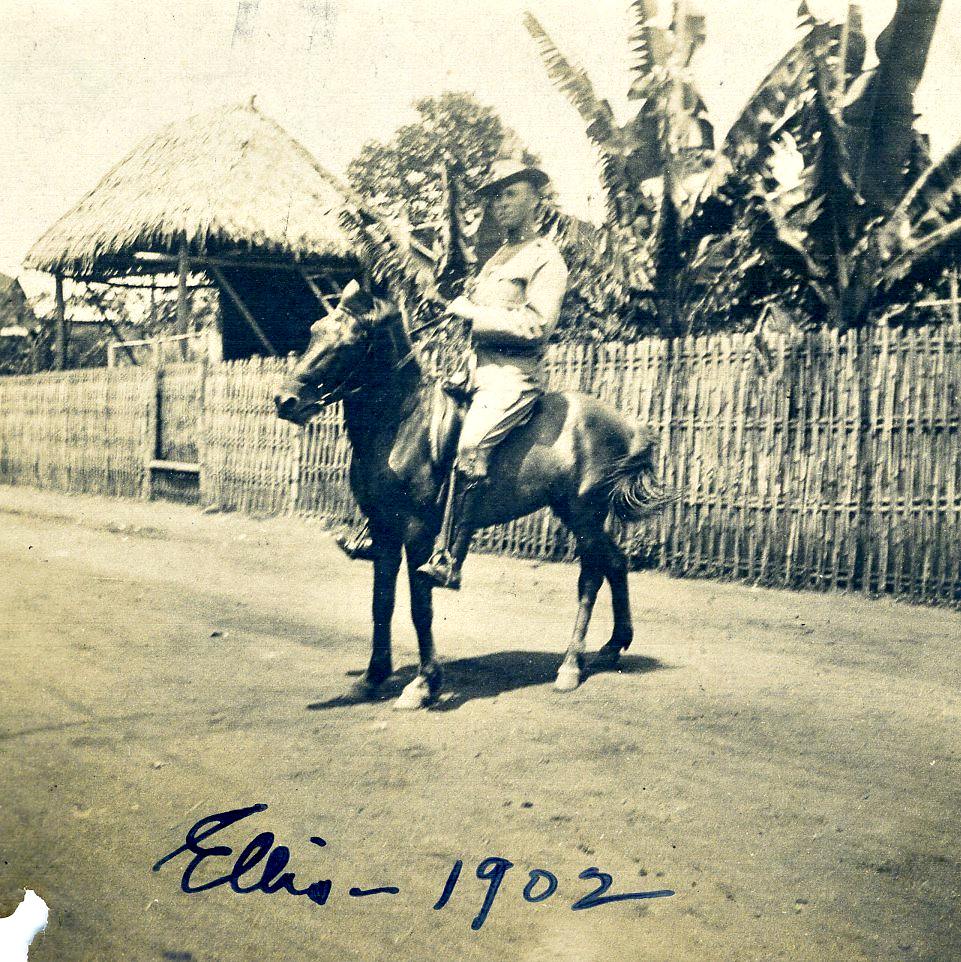
Ze835. USMC Officer Ellis on horseback in Olongapo, circa 1903. This picture is from the Earl Hancock “Pete” Ellis Picture Collection in the U.S.M.C. Archives.
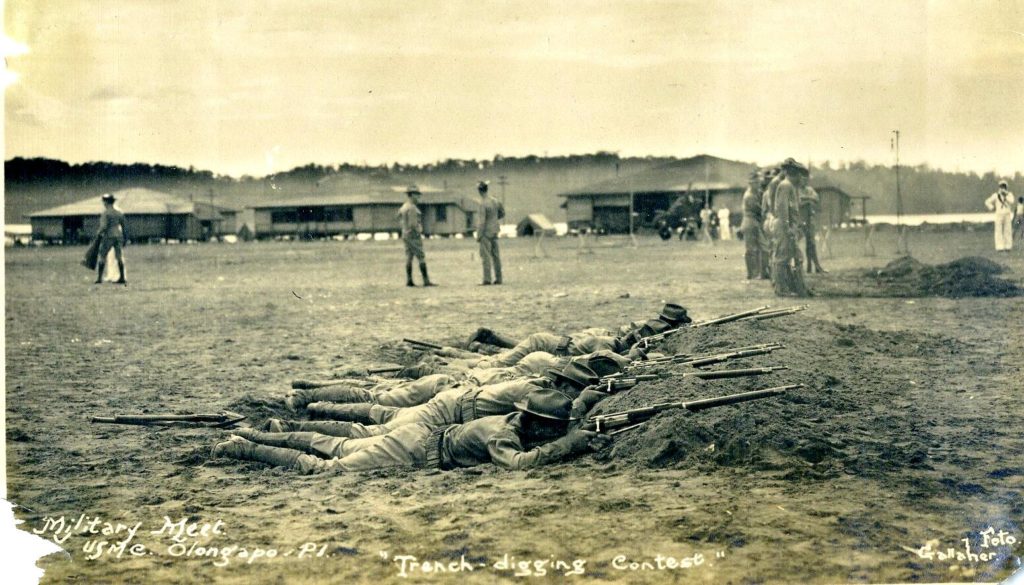
Ze836. One of 4 images of USMC contests in Olongapo, circa 1909, behind the 3 bungalows and across the Olongapo Harbor is the ridgeline that in the 1950s became the Cubi Point Naval Air Station. This picture is from the Earl Hancock “Pete” Ellis Picture Collection in the U.S.M.C. Archives.
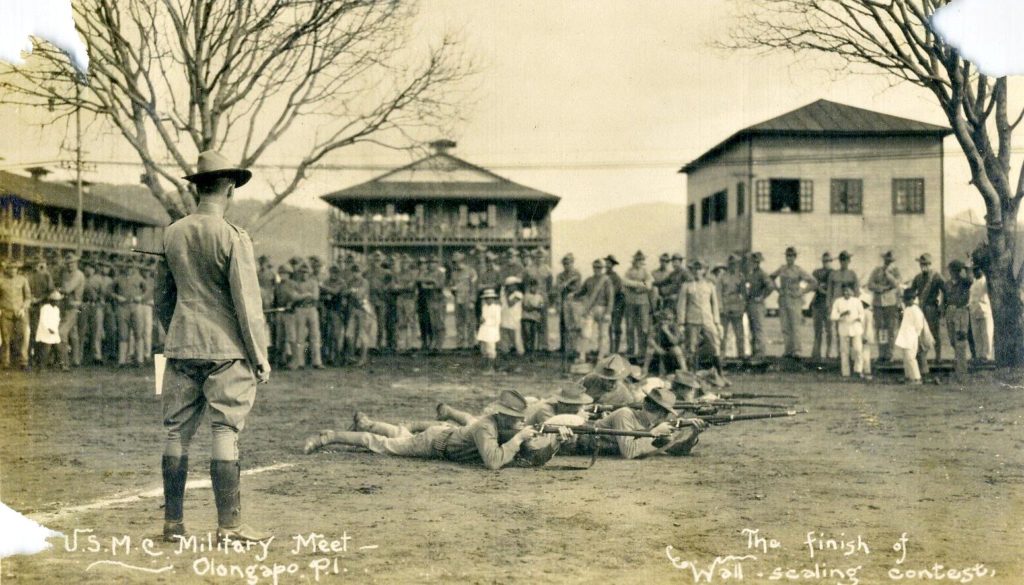
Ze837. One of 4 images of USMC contests in Olongapo, circa 1909. The building at right is what I call one of two utility buildings in my earlier graph. This picture is from the Earl Hancock “Pete” Ellis Picture Collection in the U.S.M.C. Archives.
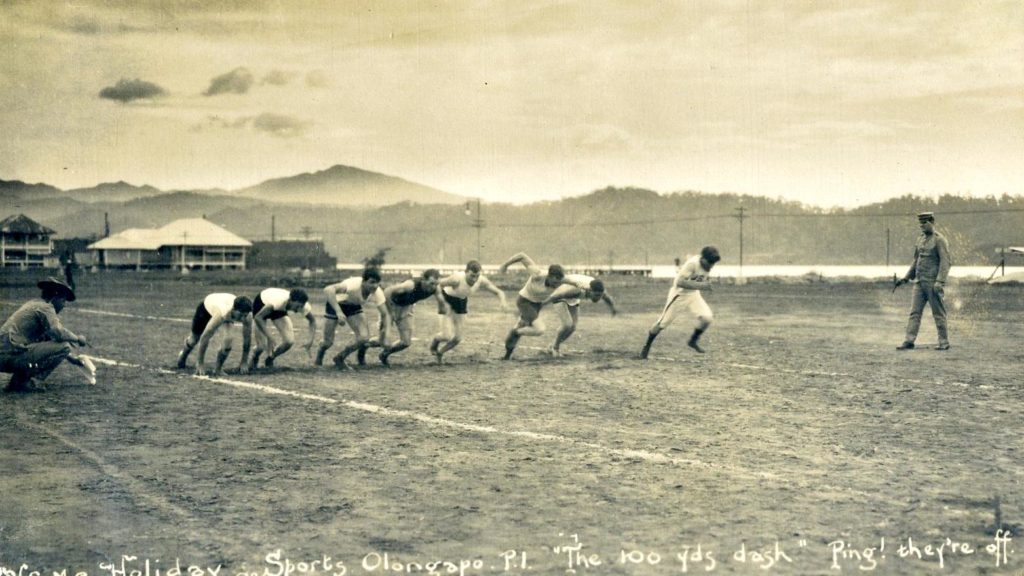
Ze838. One of 4 images of USMC contests in Olongapo, circa 1909. They are off and running. Left in back we see the Dewey Dry Dock. This picture is from the Earl Hancock “Pete” Ellis Picture Collection in the U.S.M.C. Archives.
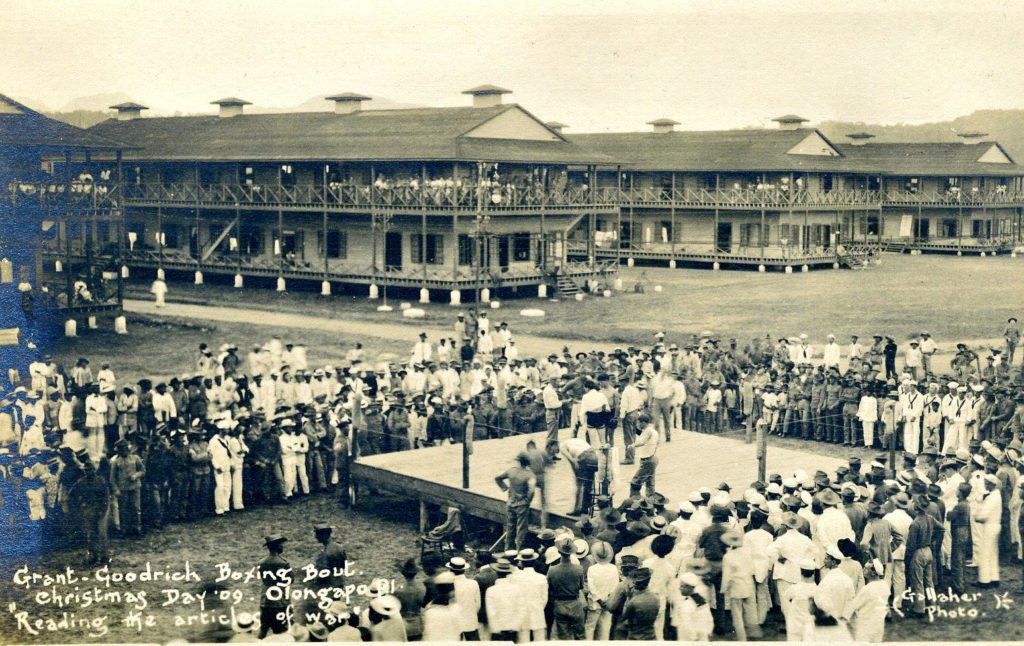
Ze839. One of 4 images of USMC contests in Olongapo, circa 1909, the boxing match. This picture is from the Earl Hancock “Pete” Ellis Picture Collection in the U.S.M.C. Archives.
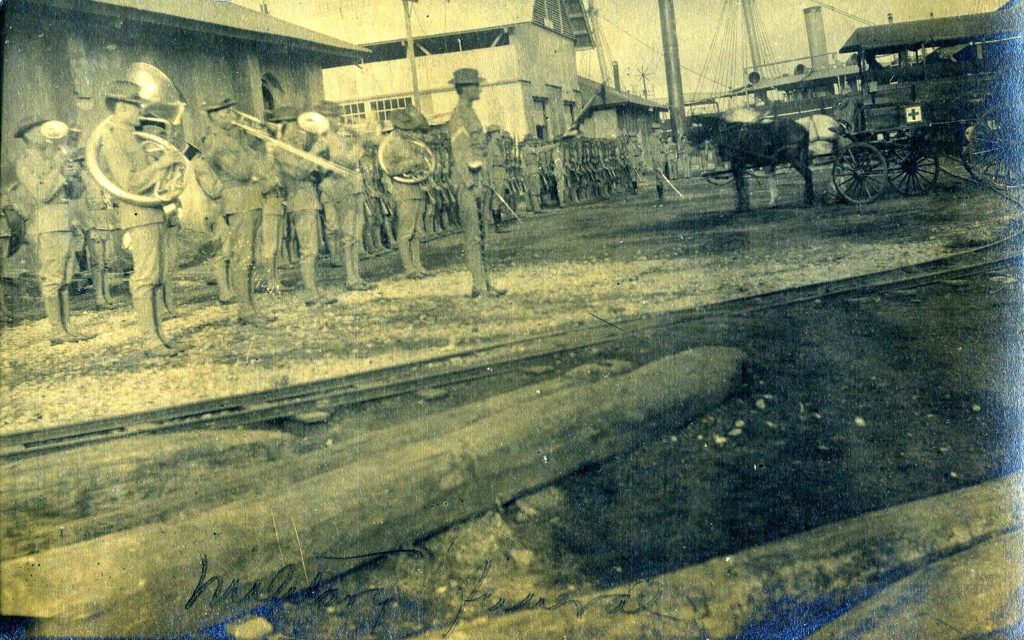
Ze840. A USMC burial ceremony, circa 1909, somewhere in the Philippines; perhaps in Cavite.
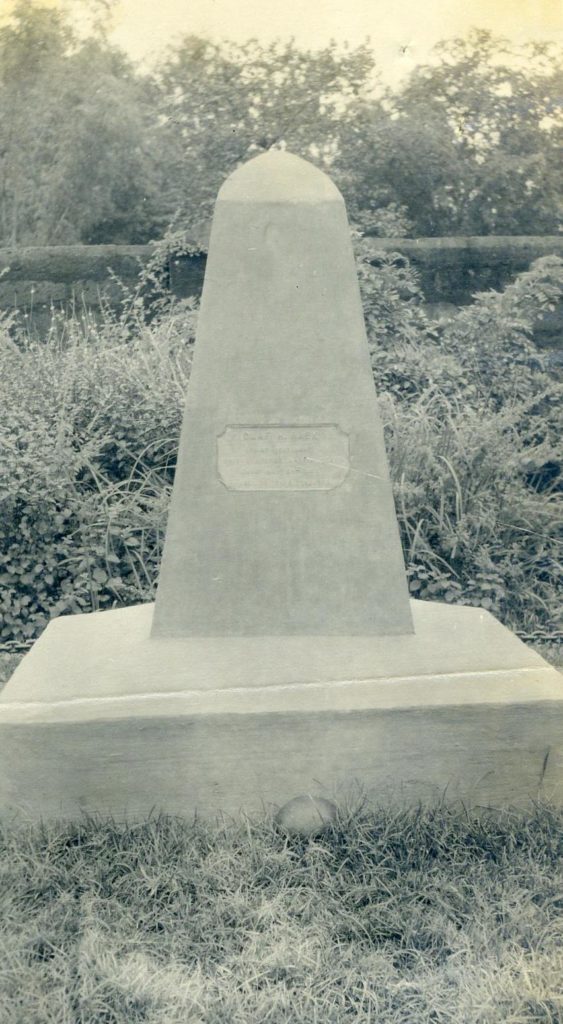
Ze841. In the USMC image collection, it said: Unidentified Memorial in the Philippines, circa 1909; but I could make out the name Olaf H. Rask. I searched and did come up with something. Look at the next three images.
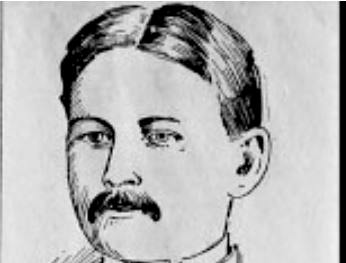
Ze842. The name Olaf H. Rask was found in the Colorado Historic Newspaper Collection here is the URL: https://www.coloradohistoricnewspapers.org/
This is one of 3 images about Lieut. Olaf H. Rask from the Colorado newspaper Silver Standard, Volume XVI, Number 32, June 14, 1902, not being a PC Geek I copied the info in pieces. This is a picture of the Lieutenant.

Ze843. The name Olaf H. Rask was found in the Colorado Historic Newspaper Collection here is the URL: https://www.coloradohistoricnewspapers.org/
This is one of 3 images about Lieut. Olaf H. Rask from the Colorado newspaper Silver Standard, Volume XVI, Number 32, June 14, 1902, not being a PC Geek I copied the info in pieces. This is the head of the article about a telegram from Cavite.
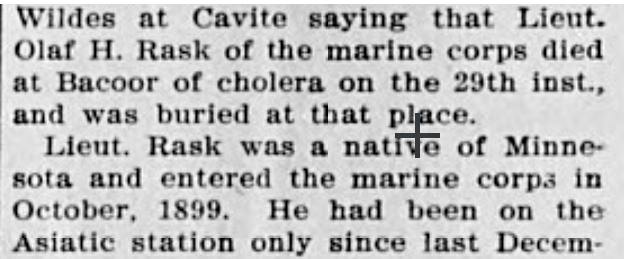
Ze844. The name Olaf H. Rask was found in the Colorado Historic Newspaper Collection here is the URL: https://www.coloradohistoricnewspapers.org/
This is one of 3 images about Lieut. Olaf H. Rask from the Colorado newspaper Silver Standard, Volume XVI, Number 32, June 14, 1902, not being a PC Geek I copied the info in pieces. The article says that the Lieutenant died of Cholera in 1902 and was buried in Bacoor, that is next to Cavite.
Karl wonders whether he was interned in 1945 or so to the Clark Cemetery?
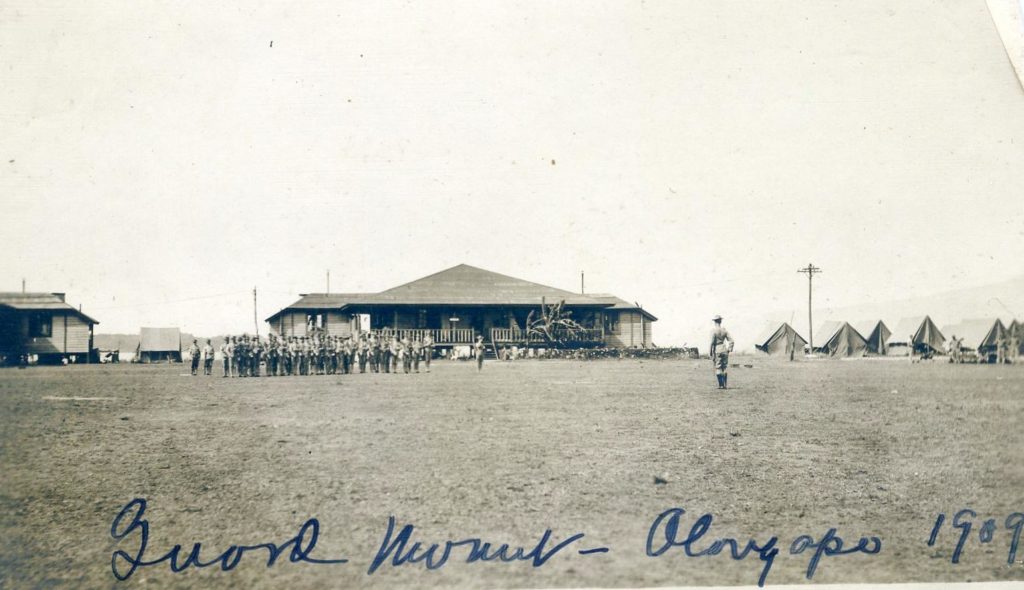
Ze845. This USMC event is called: Guard Mount and was carried out in Olongapo circa 1909. The bungalow is one of 3 along the waterfront and behind the bungalow in the picture, out of view, and across the Olongapo Harbor would be the actual Cubi Point that later gave its name to Cubi Point Naval Air Station.
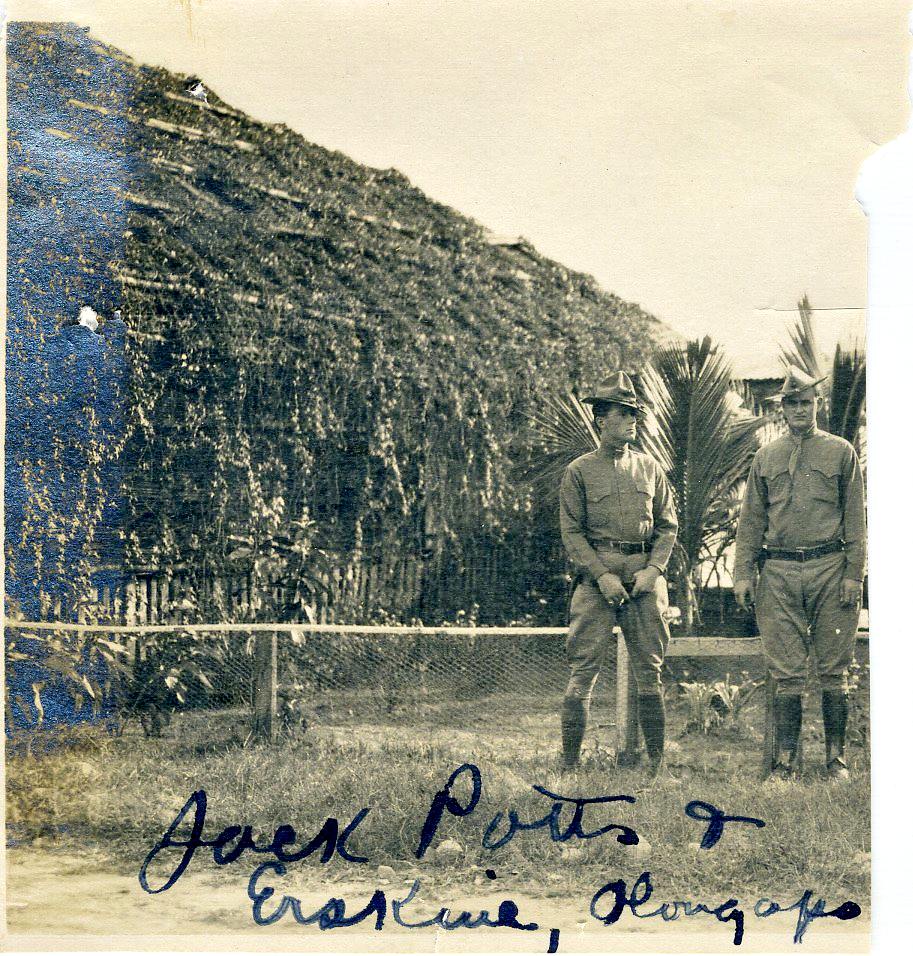
Ze846. Two Marine officers alongside what might be an officer bungalow in Olongapo, circa, 1909. This picture is from the Earl Hancock “Pete” Ellis Picture Collection in the U.S.M.C. Archives.

Ze847. Several Marine officers alongside what might be an officer bungalow in Olongapo, circa, 1909. This picture is from the Earl Hancock “Pete” Ellis Picture Collection in the U.S.M.C. Archives.
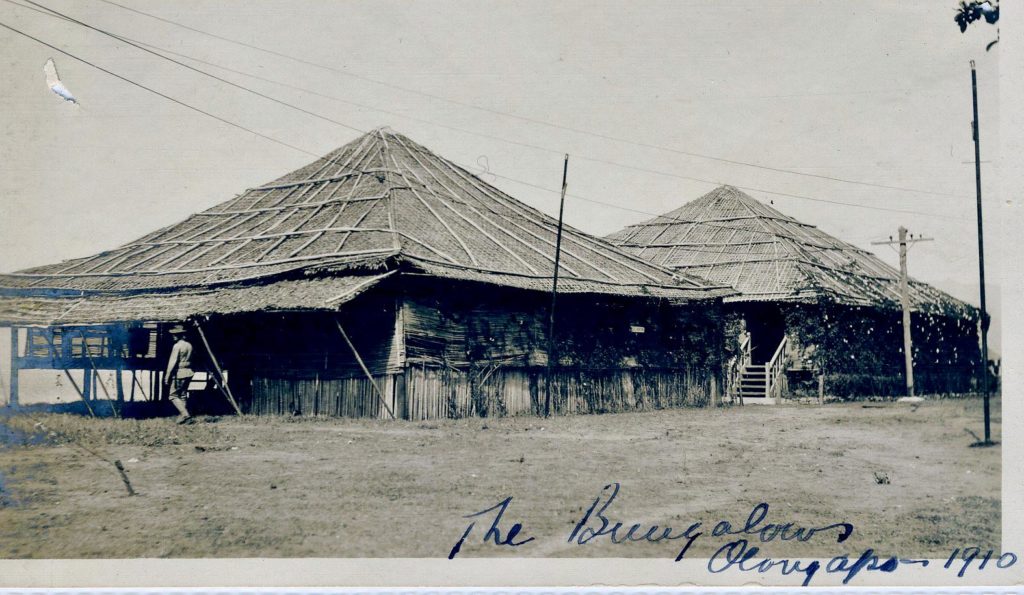
Ze848. Two bungalows along the waterfront, what might be Bachelor Officer Quarters, in Olongapo, circa 1909. Not exactly high class in Karl’s opinion. This picture is from the Earl Hancock “Pete” Ellis Picture Collection in the U.S.M.C. Archives.
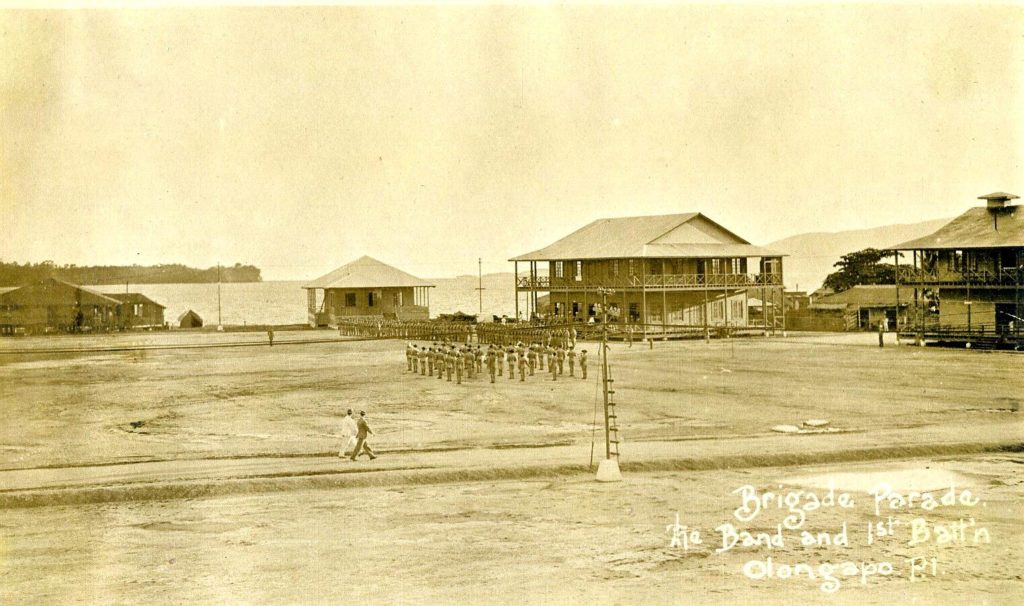
Ze849. This is one of three pictures of the U.S.M.C. holding parades and inspections in Olongapo, circa 1907 to 11. In this picture we can see the actual Cubi Point and in the middle part of Grande Island. These two buildings are apparently not built yet in the third picture. This picture is from the Earl Hancock “Pete” Ellis Picture Collection in the U.S.M.C. Archives.
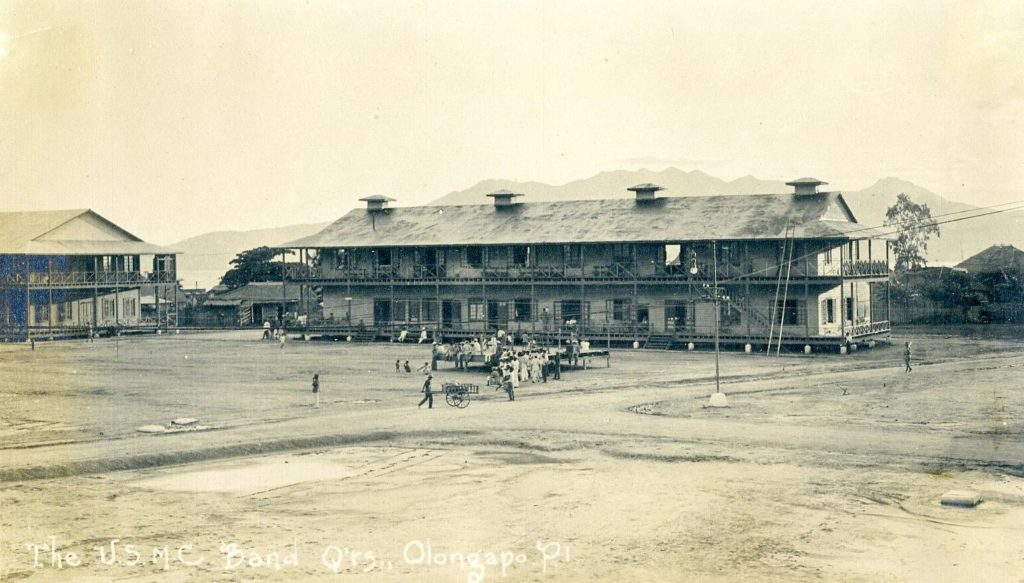
Ze850. This is one of three pictures of the U.S.M.C. holding parades and inspections in Olongapo, circa 1907 to 11. This barracks was apparently the home of the USMC Band. In this picture we can see Mont. Cinco Picos behind the barracks. The building at left is apparently not built yet in the next picture. This picture is from the Earl Hancock “Pete” Ellis Picture Collection in the U.S.M.C. Archives.
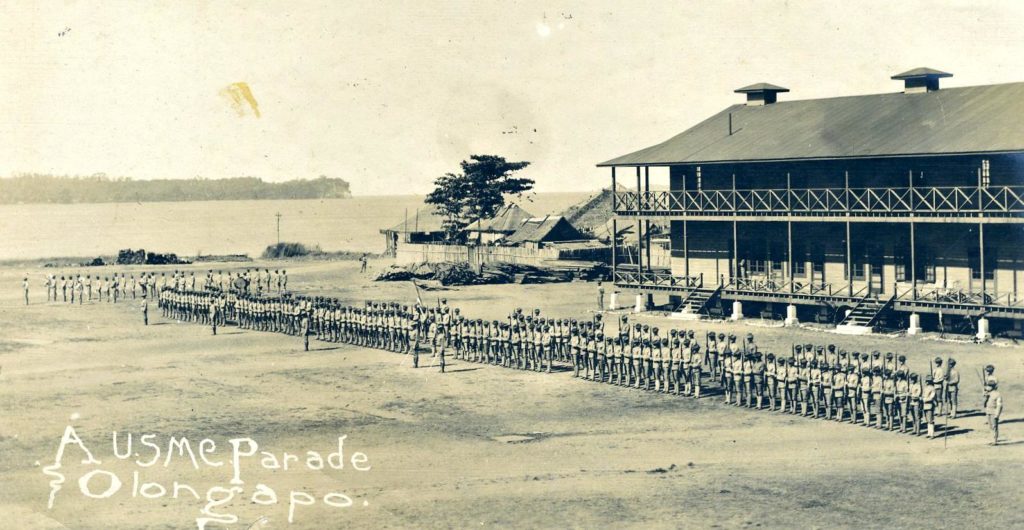
Ze851. This is one of three pictures of the U.S.M.C. holding parades and inspections in Olongapo, circa 1907 to 11. In this picture we can see the actual Cubi Point and in the middle, barely, we see part of Grande Island. In this picture, the two buildings shown in the two previous images are apparently not built yet. This picture is from the Earl Hancock “Pete” Ellis Picture Collection in the U.S.M.C. Archives.
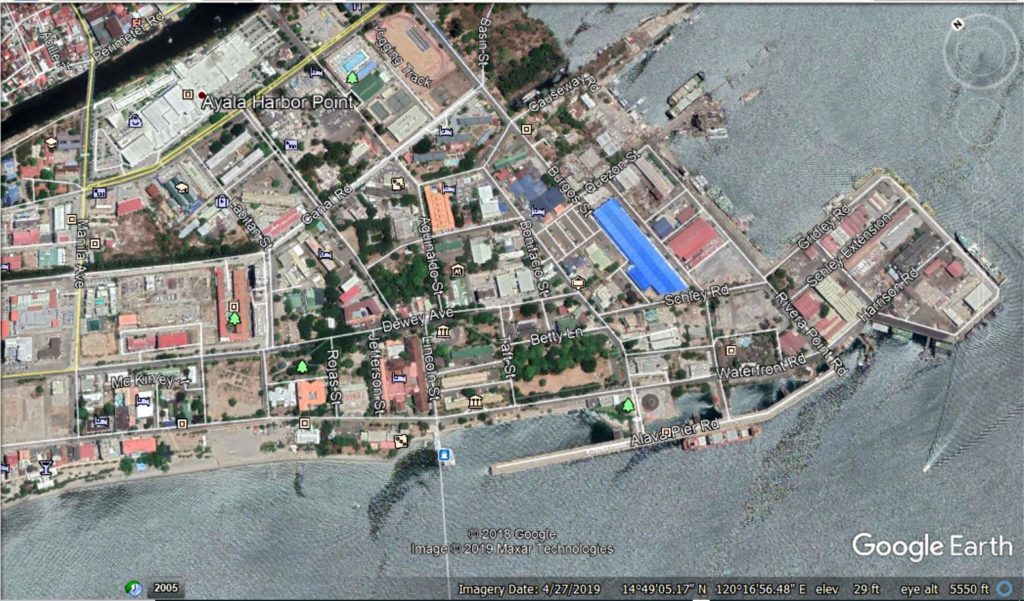
Ze852. I add this Google Earth image for you to compare it to the image # Ze831 where I whitened out the area where I placed the USMC Barracks area in the early 1900s. That area probably remained the USMC area all the way to 1941 when ordered to abandon Subic Bay and take up position in Mariveles and on Corregidor.